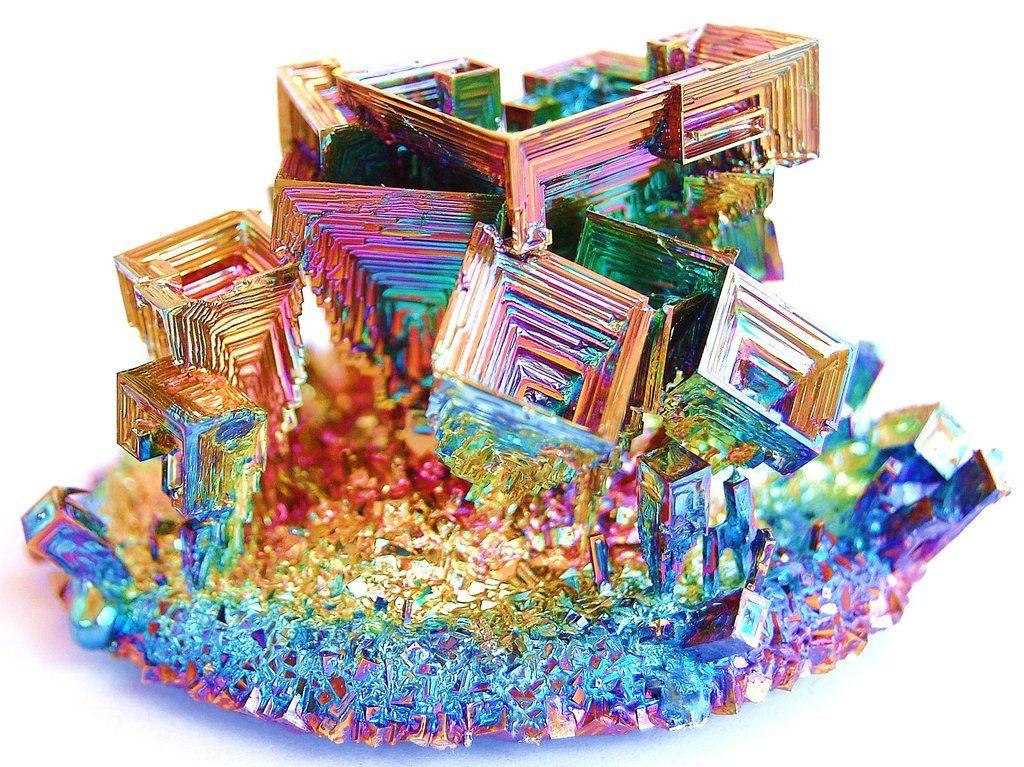Bismuth is a metal with an intriguing crystal structure and remarkable properties that are often overlooked. While not as well-known as other metals, bismuth deserves more attention for its versatility. Let's take a closer look at this unique element.
Atomic Structure and Physical Properties
Bismuth is a post-transition metal with the chemical symbol Bi and atomic number 83. It sits at the bottom of Group 15 in the periodic table, below nitrogen, phosphorus, arsenic, antimony and bismuth. Bismuth has an atomic mass of 208.98040 u.
On the atomic scale, bismuth has an unusual crystal structure that gives it some distinctive physical qualities. At room temperature, bismuth forms in a rhombohedral structure rather than the familiar cubic crystal structure of most metals. This asymmetric crystal arrangement results in bismuth being unusually fragile and easily cleaved along natural crystal planes. It also gives bismuth a very low melting point of 271.3°C, higher only than cesium, gallium and rubidium among metallic elements.
Bismuth's dense, silvery-pink appearance and diamagnetic properties make it visually appealing. It has a relative density higher than lead at 9.78 g/cm3. With a boiling point of 1564°C, bismuth sublimes instead of boiling when heated. These physical traits arise from bismuth's unusual chemical structure and electron configuration as a post-transition metal.
Uses in Medicine and Cosmetics
Though soft and brittle, bismuth finds diverse applications thanks to its unique properties. One major use is in pharmaceutical products due to bismuth's non-toxic nature and mild antiseptic abilities. Bismuth subsalicylate, commonly known by the brand name Pepto-Bismol, is a mainstay over-the-counter remedy for gastrointestinal issues like nausea, diarrhea and indigestion.
Bismuth compounds are also commonly found in cosmetic products. Bismuth oxychloride is a popular pearlizing agent that adds iridescence to eyeshadows, nail polishes and face powders. Its high refractive index and crystalline structure produce a pearly sheen without relying on mica powders. Bismuth citrate adds a silky texture to face masks, moisturizers and hair conditioners.
Due to its appealing pink color and pearlescent quality, bismuth is sometimes unwittingly used as a cheap substitute for expensive cosmetic ingredients like fucshia or amethyst. While bismuth poses no serious health risks in cosmetics, consumers should be aware of its actual content.
Uses in Materials Science
Beyond pharmaceuticals and makeup, bismuth sees widespread industrial use thanks to its low melting point and crystallographic tendencies. Bismuth alloys are useful for low-temperature applications like solders due to bismuth's serviceable thermal conductivity despite being more fusible than metals like lead. Common solders may contain over 50% bismuth.
Bismuth’s Impact on the Environment
Bismuth mining and use does pose some environmental concerns if not managed sustainably. Significant bismuth reserves exist worldwide but are produced as a byproduct rather than primary product. The top bismuth-producing nations include China, Mexico, Peru and Bolivia.
Surface and underground mining activities can disrupt ecosystems and contaminate water and soil with toxic chemicals if regulations are not followed. Smelting and refining bismuth also generates air pollution and hazardous waste that must be carefully contained. Sustainable practices like recycling scrap bismuth, monitoring emissions and reclaiming contaminated lands can curb environmental damage from bismuth production over time. Overall responsible sourcing and material stewardship are needed to support bismuth applications while protecting communities and habitats.
A Subheading: Other Notable Uses
Beyond medical, cosmetic and industrial applications, bismuth sees several other minor niche uses worth highlighting:
- Bismuth telluride is a semiconductor used in thermoelectric devices that directly convert heat into electricity. This property makes bismuth telluride ideal for power generators, refrigerators and sensors.
- Radioactive bismuth-210 is employed as a radiation source in medical treatments like brachytherapy due to its safe 5-day half-life.
- Bismuth pigments produce brilliant yellow, red, blue and green hues. They see limited use in artist paints, plastics, ceramics and glass due to their stability.
- Bismuth catalysts promote various organic reactions like hydrations and hydrogenations in industrial chemical synthesis.
- Experimental bismuth alloys show promise for producing non-toxic shot and bullets as environmental alternatives to lead ammunition.
Despite its softness and fragility, bismuth has greatly impacted industries from pharmaceuticals to electronics thanks to its distinct crystal structure and varied chemical properties. With responsible sourcing and uses, bismuth can continue enabling innovative technologies while protecting communities and the environment. Though often overlooked, bismuth deserves recognition as a versatile material with diverse real-world applications. Increased awareness of this unique post-transition metal may inspire new ideas to harness bismuth's potential in years to come.
Get more insights on this topic: https://www.insightprobing.com/the-unique-properties-of-bismuth/

